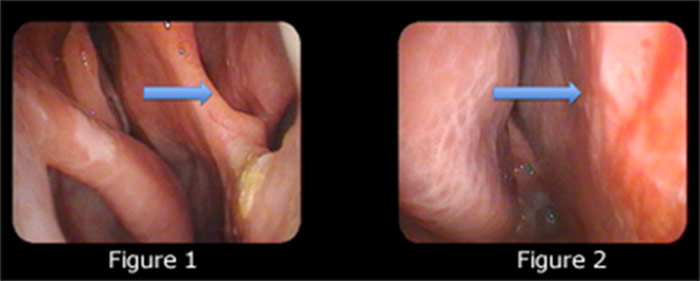For more information, photos, and details on treatment of a perforated nasal septum, visit Dr. Hamilton’s comprehensive dedicated website at: https://perforatedseptum.com/
Septal perforation is a condition that involves a hole within the nasal septum, the wall of cartilage and bone that separates the two nostrils. The septum helps to support the nose, regulate air flow and support the mucous membranes of the nose.
A hole may develop in the septum as a result of:
- Previous nasal surgery
- Trauma
- Cocaine use
- Septum piercing
- Cancer
- Excessive nose picking
- Disease such as syphilis, typhoid and tuberculosis
This condition often causes troubling symptoms such as bleeding, pain and a whistling sound within the nose. Dried blood may also accumulate within the area and lead to difficulty breathing. Some patients may not experience any symptoms from this condition. It is important for patients to seek proper medical attention for a perforated septum, as untreated larger holes may affect the structure of the nose and lead to physical deformities.
Treatment for septal perforation depends on the size and severity of the hole. Small perforations can often be treated by rinsing with saline solutions or applying lubricating gel to the area. Larger holes may require surgical repair to relieve symptoms and restore the structure and function of the septum. There are several different surgical options available for septal perforation repair. Dr. Hamilton will determine the most appropriate approach for each patient’s individual condition after a thorough physical exam and personal evaluation.
Septal Perforation Repair Procedure

Figure 1. Pre-surgery endoscopic view of a large 3cm septal perforation (arrow) Figure 2. Post-surgery endoscopic view at three weeks after surgery showing close of large perforation (arrow)
During perforation repair surgery, Dr. Hamilton may take a tissue graft from the inside of the nose or other part of the body to fill in the septal hole. A tissue flap may also be created to repair the perforation. This procedure is performed under general anesthesia and can often utilize minimally invasive techniques to reduce the trauma and recovery times associated with surgery.
Larger perforations may be difficult to close, and require the specialized care of an experienced surgeon like Dr. Hamilton. Instead of surgical treatment, a septal perforation can also be treated with a silicone plastic “button”, which is snapped together over the two sides of the hole to cover it. However, the hole may continue to grow over time, or the button may fall off, requiring additional treatment.
Recovery from Septal Perforation Repair
After septal perforation repair, Dr. Hamilton will likely pack the nose with a splint for five to seven days. Once the splint is removed, patients will need to rinse their nose frequently with saline throughout the healing process. Nasal drainage is likely to occur after surgery. Patients can return to work shortly after surgery, but should avoid blowing their nose, bending forward and strenuous exercise for a few days. Full healing usually takes two to three weeks.
Risks of Septal Perforation Repair
As with any type of surgical procedure, there is a risk of infection and bleeding after septal perforation repair. More serious complication may include severe pain, fever, pus, persistent headache or heavy bleeding. It is important to notify Dr. Hamilton if any of these symptoms occur. In some cases, the perforation may reopen and require additional surgery. However, most patients achieve successful results from this procedure with no complications and no need for additional treatment.
To learn more about septal perforation treatment or surgery visit Dr. Hamilton’s septal perforation guide.
MEET our doctors TODAY. IN-OFFICE & VIDEO
APPOINTMENTS AVAILABLE
